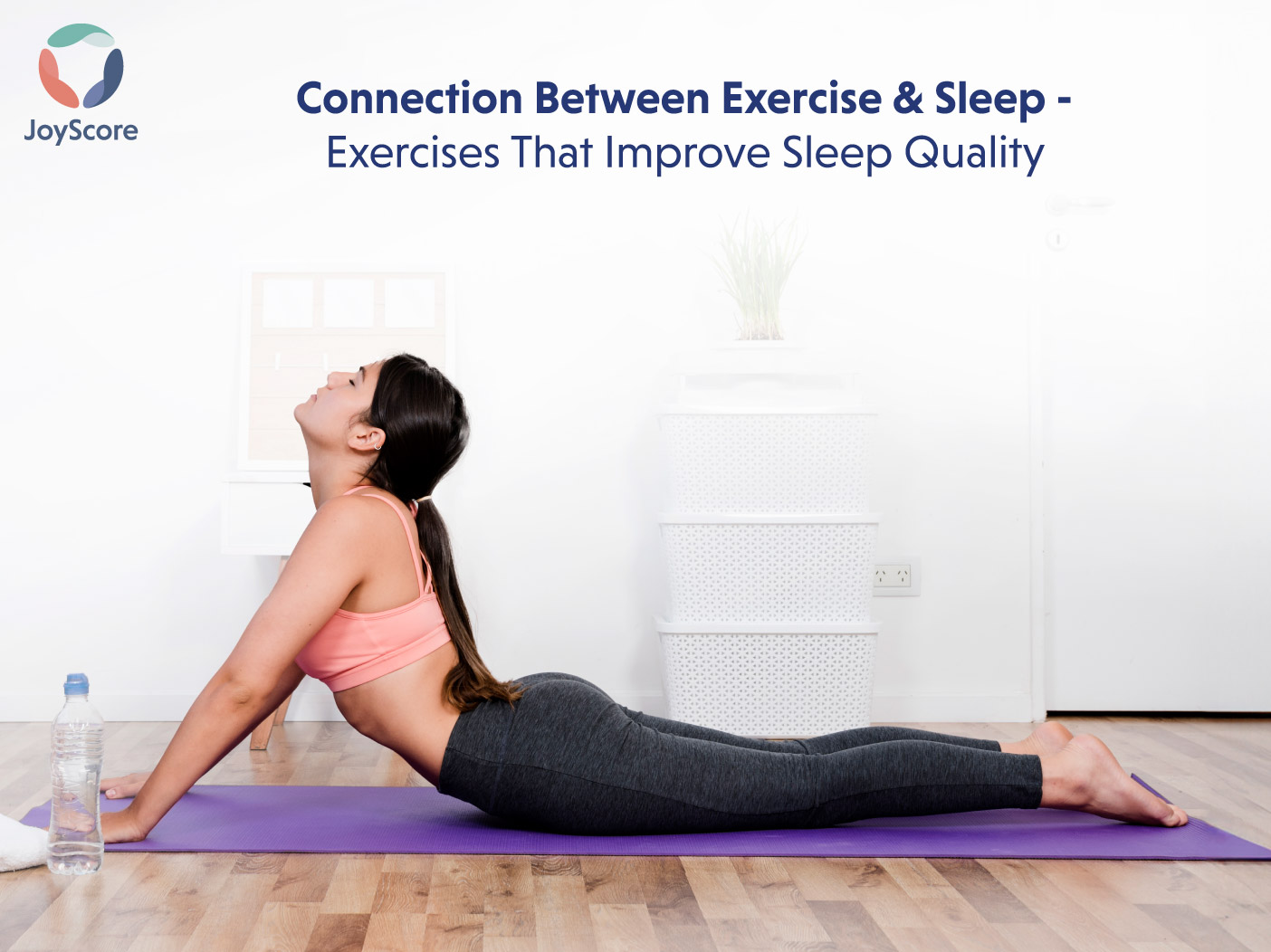Exercise and sleep are critical components of good health. In fact, Did you know that these two factors, sleep and exercise, also share a bidirectional link, making them interdependent?
EXERCISE IMPROVES SLEEP QUALITY
Getting at least 30 minutes of moderate aerobic exercise a day or deep breathing helps a person relax and enjoy a sound sleep. It also increases the person’s slow-wave sleep, allowing the brain and body a chance to rejuvenate. There are many more benefits from exercising that lead to a good night’s sleep. Here are four more to remember.
- RESTRICTS DAYTIME SLEEPINESS
If one is napping several times a day, falling asleep at night can become a challenge. Exercise must be done regularly to help this as it makes one feel more energetic and less tired. Scientifically speaking, when physical activity improves muscle strength and endurance, the body uses oxygen and nutrients efficiently. Thus, there is less of a feeling of burnout and more activeness during the day, promoting a better night’s sleep.
- STIMULATES ENDORPHIN HORMONES
Exercise pumps up the brain’s feel-good hormones, known as endorphins, which have a stress-bursting effect. They diminish the perception of pain and act as sedatives to make one fall asleep faster. Endorphins are also responsible for regulating the circadian rhythm and REM (rapid eye movement) sleep.
- RAISES THE CORE BODY TEMPERATURE
Physical activity helps regulate body temperature, which can aid in sleeping. The gradual increase and then drop in body temperature facilitates easier sleepiness as well as improved sleep quality and duration.
- HELPS FIGHT AGAINST SLEEPING DISORDERS
By identifying the positive effects of exercise in relation to sleep, individuals can make informed decisions on how to manage sleep disorders without medication. In a research study on sleep, the impact of acute aerobic exercises was observed on 17 young females suffering with anxiety disorder. They were instructed to use a treadmill for 30 minutes a day with a maintained heart rate reserve of 65%-88%. At the end, the experiment showed a large decrease in anxiety and fatigue levels with an improvement in energy levels. Similar positive results have been seen with other sleep disorders like insomnia, obstructive sleep apnea and parasomnias also.
5 EXERCISES THAT IMPROVE SLEEP QUALITY
- CARDIO WORKOUTS
These are the aerobic exercises related to rapid breathing and faster heartbeats. The intensity of these exercises is moderate, which can be measured through the Talk Test. In this, the moderation level is confirmed if one is able to talk at a normal rate but not able to sing while exercising. As per studies, moderate-intensity aerobic exercises have also been shown to reduce the severity of sleep-disordered breathing conditions like sleep apnea. Some common cardio exercises include swimming, jogging, biking and walking.
- BREATHING EXERCISES
These are simple and easy exercises to wind down before bedtime. However, learning them demands both patience and practice. Some important breathing exercises good for sleep are:
- Belly breathing
- Box breathing
- Alternate nostril breathing
- Pranayama breathing
- 4-7-8 breathing
- YOGA
Yoga is a gentle and restorative way to improve sleep quality. In this, apart from various physical poses, breath also plays a vital role in relaxing the brain. Yoga is best practiced right before bedtime for guaranteed sound sleep. Here is a list of seven restorative poses to relieve tension and stress at the end of the day:
- Standing forward bend
- Standing half-forward bend
- Corpse pose
- Wide-knee child’s pose
- Reclining bound angle
- Legs up the wall pose
- Legs on the chair pose
- STRETCHING
Stretching gives a person awareness of their body and helps develop mindfulness. This mindfulness or focus on the breath and body further improves sleep quality. Stretching also has physical benefits like relieving muscle tension and preventing sleep-disrupting cramps. So, one can stick to these gentle stretches before bed for a more improved sleep:
- Neck stretches
- Low lunge
- Child’s pose
- Bear hug
- RESISTANCE EXERCISES
These are strength training exercises, best done in repetition and in 12 sets at a time. The result is reduced risk factors leading to sleep disorders and improved sleep quality. Examples of resistance exercises are:
- Weight lifting
- Workout with resistance bands
- Push-ups and sit-ups
- Squats
CONCLUSION
Putting muscles into action and moving our body adds more sound hours of sleep at night. Exercise resets the circadian rhythm, relieves stress, reduces sleep disorders and improves sleep quality. So, engage in regular physical activity to master your sleep health!
Download the JOYSCORE APP to learn how to live a more joyful life.
FAQ’S
Q1 What is the sleep exercise cycle?
A1 The two entities, sleep and exercise, create a sleep-exercise positive feedback loop, which is termed a sleep-exercise cycle. When one sleeps well, they reserve the energy to work out properly, and when they work out regularly, it promotes better sleep.
Q2 How long can one exercise for a good night’s sleep?
A2 Just 30 minutes of moderate exercise during the day is enough to sleep better. However, longer or more vigorous workouts can lead to more physical benefits. So, rather than focusing on longer durations, one must focus on daily allotments if sleeping better is their priority.
Q3 Which exercise is best for good sleep?A3 Although aerobic exercises are termed the best for better sleep, some studies also prove vigorous strength training and active yoga classes to be beneficial before bedtime for a sound sleep.



